Are air fresheners bad for dogs?
Table of Contents
Part 1 - Are Air Fresheners Toxic to Dogs?
Part 2 - Toxic ingredients in air fresheners
Part 3 - What Are the Symptoms of Air Freshener Poisoning in Dogs?
Part 4 - Plug-in vs spray: which is worse?
Part 5 - Are Natural or Essential Oil Air Fresheners Safe for Dogs?
Part 6 - Dog-safe air freshener brands
Part 7 - Alternatives to chemical air fresheners
Part 8 - What Should I Do If My Dog Is Exposed to a Toxic Air Freshener?
It’s a question more Aussie pet owners are asking as their furry mates start sneezing, scratching, or acting a bit off. One minute your lounge smells like “Spring Rain,” the next, your dog’s wheezing like they’ve run a marathon. These scents might freshen up the room, but they could be stirring up trouble for your pup’s lungs and nose.
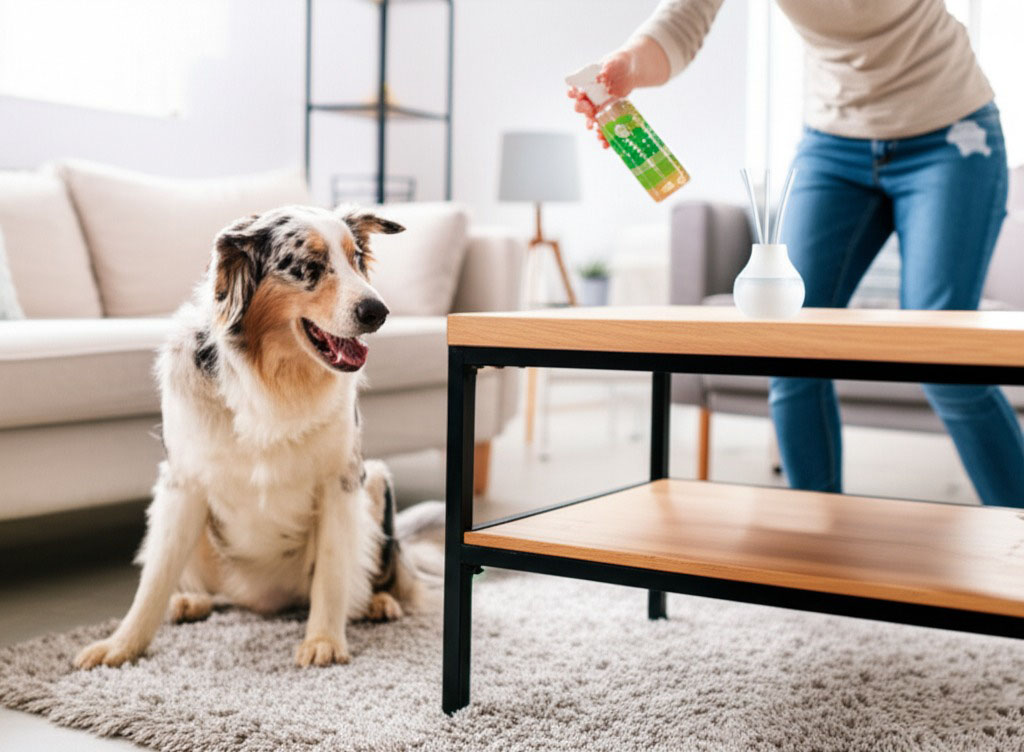
Vet Dr. Jessica May warns, “Dogs are far more sensitive to airborne chemicals than humans — even a little can trigger a reaction.” Their smaller airways and supercharged sniffers mean they cop the brunt of it, while we barely notice.
In this guide, we’ll sniff out the nasties hiding in common air fresheners, show you which ones to avoid, and help you find safer options that won’t send your dog into a coughing fit. Let’s clear the air — literally — for you and your four-legged mate.
Are Air Fresheners Toxic to Dogs?
Even a spritz of "Ocean Breeze" might come with a hidden price for your pup. Here's what science—and vets—are barking about.
How air fresheners affect canine lungs
Air fresheners release VOCs (volatile organic compounds) and synthetic fragrances into the air, which dogs inhale deeply due to their constant sniffing. These chemicals can irritate canine lungs, trigger asthma-like symptoms, and worsen pre-existing respiratory health issues.
Dogs have more sensitive airways than humans.
Chemical inhalation can cause sneezing, coughing, or wheezing.
Repeated exposure may lead to chronic lung irritation or allergies.
Not all reactions are instant—some build slowly over time, making early signs easy to miss.
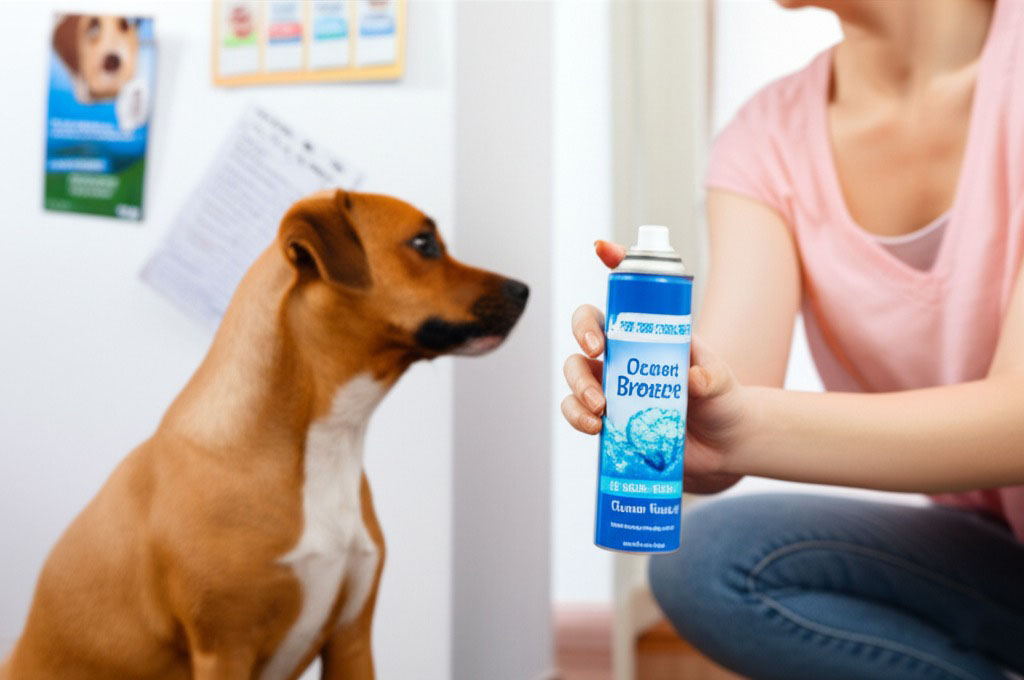
Why dogs are more sensitive than humans
Mate, dogs aren’t just small humans in fur coats. Their bodies work differently.
Olfactory receptors: Dogs have up to 300 million, humans only 6 million. They breathe in stronger doses of airborne chemicals.
Smaller body mass: A puff of scent that’s fine for us can overwhelm a small pup.
Detox pathways: Their metabolic systems don’t break down chemicals as efficiently as ours.
That’s why something that smells “clean” to you could be straight-up toxic to them.
Vets’ concerns about indoor air pollution
According to Dr. Elise Berry, a Sydney-based vet, "We’re seeing more cases of unexplained chronic coughing or nasal discharge in dogs—often linked to air freshener exposure."
Veterinarians worry about:
Long-term effects from indoor air pollutants
Chronic respiratory issues triggered by household sprays
Poor ventilation amplifying toxic load
The RSPCA has also flagged the risks of indoor environmental toxins, pushing for awareness around common household chemicals and their impact on animal welfare. Keep your dog's space fresh—but safe.
Toxic Ingredients in Air Fresheners
Not all air fresheners are created equal — and some contain toxic nasties that are more than just unpleasant for your dog. Let’s sniff out the culprits.
Volatile organic compounds (VOCs) explained
VOCs are sneaky chemicals that vaporise at room temp and linger in indoor air. Found in many fresheners, they include formaldehyde and benzene—linked to cancer and respiratory issues in dogs. Poor indoor air quality caused by VOC emissions can irritate your dog’s lungs, especially in enclosed spaces. VOCs are also common in cleaning products, solvents, and building materials, compounding the exposure. While they make homes smell "clean," they’re quietly reducing your pet’s health.
Dangers of phthalates in home scents
Phthalates are added to air fresheners to make scents last longer. But they’re known endocrine disruptors, which means they can mess with hormones.
May affect reproductive health in both humans and pets
Linked to asthma and allergy development in dogs
Often found in scented candles and plug-ins
According to environmental scientist Dr. Leonie Graham, “Prolonged exposure to phthalates is concerning—especially in small pets living indoors full-time.”
What synthetic fragrance really means
“Fragrance” on a label can hide hundreds of chemical compounds—many of them artificial. These mystery mixes often include irritants and allergens, but manufacturers aren't legally required to disclose ingredients. That “fresh linen” smell might be masking health concerns like chronic inflammation, or reactions in dogs with skin or respiratory sensitivities. A whiff of perfume for us? Possibly a migraine—or worse—for your pup.
Preservatives and binders that harm dogs
Let’s break it down. Some air fresheners use the same preservatives and binders found in dodgy pet foods. Dogs may react to:
| Chemical | Common Use | Risk to Dogs |
|---|---|---|
| BHA/BHT | Preservatives | Cancer risk, allergy |
| Propylene Glycol | Humectant/binder | Liver damage, seizures |
| Ethoxyquin | Antioxidant preservative | Kidney/liver effects |
Small doses over time = big problems. Just like in food, these additives don’t belong near your pet’s snout. Keep it clean, simple, and additive-free.
What Are the Symptoms of Air Freshener Poisoning in Dogs?
Noticed your dog acting odd after you’ve sprayed the room? Some symptoms sneak in quietly but could signal something more serious. Here’s what to watch for.
Breathing changes after scent exposure
Dogs exposed to certain airborne chemicals may start coughing, wheezing, or panting more than usual. That’s often their respiratory system reacting to synthetic fragrances or poor ventilation.
Symptoms may include:
Rapid or laboured breathing
Excessive sneezing or snorting
Lethargy after room sprays are used
“A dog’s lungs are way more sensitive to inhaled irritants than ours,” says Dr. Elise Cohen, veterinary toxicologist. “Even low-level inhalation can trigger asthma or allergy-like responses in pets.”
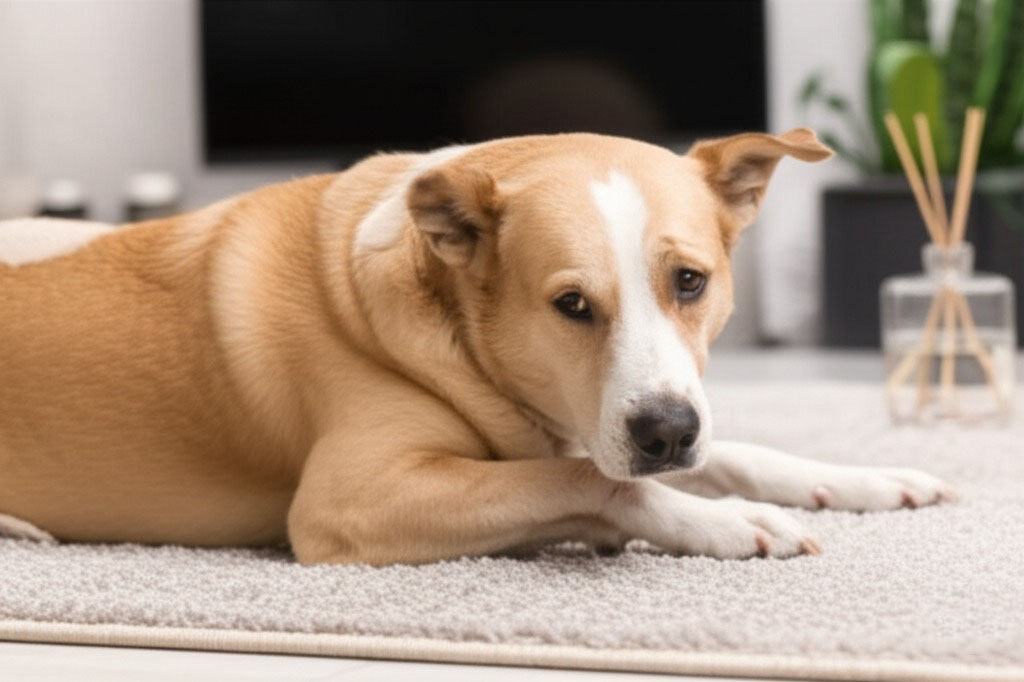
Skin irritation linked to home fragrances
Mate, if your dog’s scratching like mad or breaking out in red patches after you’ve cleaned the house or lit a scented candle, your household products could be the culprit.
Many fragrance chemicals—especially in diffusers or plug-ins—can cause topical reactions like:
Contact dermatitis – redness and itching on paws or belly
Rash – small bumps or inflamed patches under the fur
Worsening eczema – especially in dogs already prone to allergies
Steer clear of heavily perfumed cosmetics or cleaners near their beds or toys—they're often more potent than you'd think.
Plug-in vs Spray: Which is Worse?
When it comes to pet health risks, the debate over plug-in air fresheners versus spray air fresheners sparks genuine concern among dog owners. Both release volatile organic compounds (VOCs) that degrade indoor air quality, yet the way they disperse chemicals leads to different impacts on pets.
Veterinary toxicologist Dr. Karen Ellis explains, “Sprays cause an intense burst of chemical exposure, often landing directly on pet bedding or fur, which increases contact irritation. Plug-ins, on the other hand, are constant sources of inhalation hazards, particularly dangerous in poorly ventilated rooms.”
Pet owner Dave Phillips from Brisbane shared his experience: 🗣️ “After we switched to a plug-in, our spaniel Max developed a dry cough within two weeks. It disappeared after we unplugged it.”
Industry tests from the Environmental Working Group (EWG) show that common plug-ins release up to 20 types of VOCs, including benzene and formaldehyde, known irritants that may trigger respiratory irritation in dogs.
🏆 The Australian Pet Health Association recommends:
Avoiding continuous-release scents in enclosed areas
Choosing fragrance-free or pet-safe certified products
Using HEPA air purifiers as alternatives
When selecting between these two, ask: which would I feel safe breathing next to all day? Your dog does not get to choose.
Are Natural or Essential Oil Air Fresheners Safe for Dogs?
Essential oils might smell like a dream, but for dogs, they can be a health nightmare. Let’s break down what’s truly safe and what’s silently harmful.
Toxic essential oils for dogs
Some essential oils are flat-out no-gos for pets. Things like clove, cinnamon, citrus, and pine might seem harmless, but they can cause serious toxicity in dogs.
Symptoms of poisoning include vomiting, drooling, tremors, and low body temp.
Even skin contact can cause burns or allergic reactions.
Oils in diffusers spread particles into the air—your dog can inhale or lick those particles from their coat. Always check with a vet before using any oil around pets.
Risks of diffusing eucalyptus and tea tree
Here’s the thing—tea tree oil and eucalyptus oil might be staples in natural cleaning or relaxation routines, but both are toxic to pets. Even small amounts can spark big problems.
“I’ve seen dogs come in with staggering and drooling just from sniffing diffused tea tree oil,” says Dr. Rachel Hines, vet toxicology specialist.
Inhalation can cause coughing, wheezing, and respiratory distress.
Liver damage and neurological effects can develop after prolonged exposure or accidental licking.
Cats are even more sensitive—but dogs aren’t off the hook either.
Keep these oils well away from your furry mates, especially in enclosed spaces.
Pet-safe herbs vs risky oils
Some plant-based scents can lift your mood and keep your pup safe. Let’s compare a few common ingredients used in aromatherapy and diffusers:
| Herb/Oil | Safety for Dogs | Notes |
|---|---|---|
| Lavender (herb) | Safe (when diluted) | Use sparingly in well-ventilated areas |
| Peppermint Oil | Risky | Can cause skin and breathing issues |
| Chamomile | Safe | Gentle, calming herb, good for mild scenting |
| Clove Oil | Toxic | High risk even in small amounts |
🪴 Tip: Stick to herbs rather than concentrated oils. Use natural remedies like dried lavender satchels instead of plug-in scent bombs.
When in doubt? Call your vet—don’t wing it with your dog's health.
Dog-Safe Air Freshener Brands
“Most pet owners mean well,” says Dr. Linda Koenig, a certified veterinary toxicologist based in Brisbane. “They want a fresh-smelling home. What they do not realise is that synthetic air fresheners can quietly harm their dogs’ respiratory and nervous systems.” This prompted a new wave of safer products—tested, reviewed, and often praised by both vets and everyday Aussie dog lovers.
🐾 Tested Favorites from Real Homes Take the Moso Natural activated charcoal bags. Sydney dog trainer Mark Jensen swears by them. “No scent, no fuss—just clean air. My bulldog stopped sneezing within days.” Other natural odor eliminators, like Smelleze and Fresh Wave, rank highly among allergy-conscious pet parents.
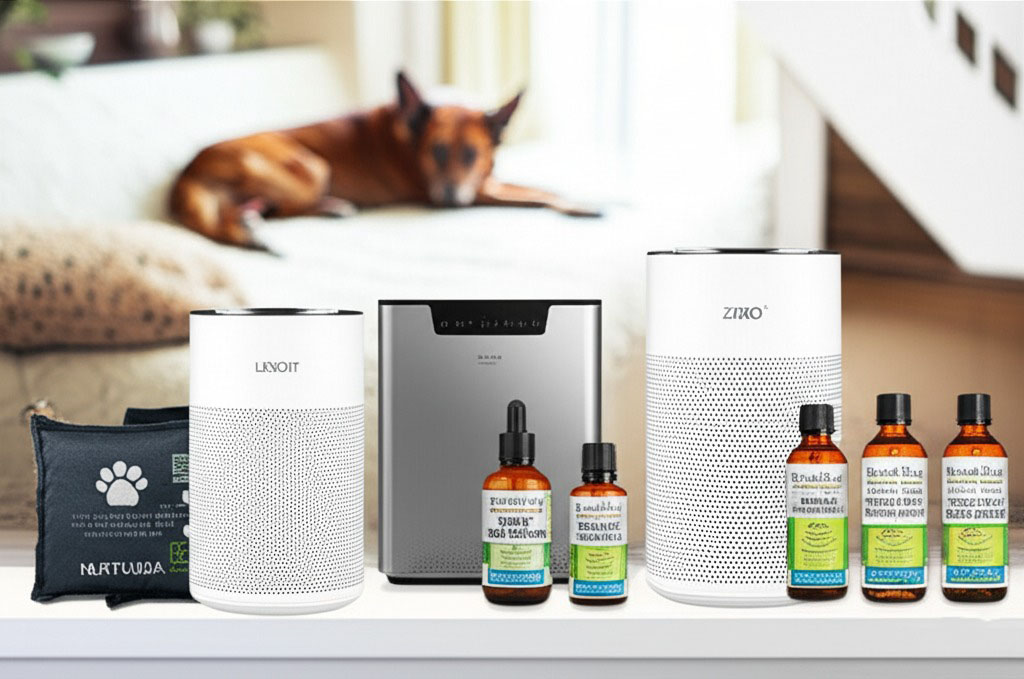
🧪 Vet-Approved and Award-Winning Options
Air purifiers: Levoit and Winix Zero are HEPA-filtered and certified asthma-safe.
Enzymatic odor removers: Rocco & Roxie holds a Seal of Approval from the Carpet and Rug Institute.
Essential oil diffusers (pet-safe): Brands like Plant Therapy offer only diluted, dog-safe oils—endorsed by certified aromatherapist Kristen Leigh Bell.
🧼 Eco Picks That Clean and Deodorise
Baking soda solutions and vinegar-based cleaners: Both neutralise odours without artificial perfumes.
Plant-based sprays: Ecovacs and Biokleen use food-grade ingredients and have cruelty-free certifications.
Unscented options: Products like Seventh Generation Free & Clear are safe, simple, and fragrance-free.
🌿 “Good air starts with smart airflow,” adds Dr. Koenig. She recommends natural ventilation techniques like cross-breezing and window filters for everyday freshness. Clean air, happy dogs.
Alternatives to Chemical Air Fresheners
Looking to ditch chemical sprays but keep your home smelling fresh? These dog-safe, natural alternatives are easy, affordable, and actually work.
Using air purifiers instead of sprays
Air purifiers are a top pick for pet owners wanting clean, scent-free air without the nasties. Units with HEPA filters capture allergens, pet dander, and even airborne odours.
Boosts indoor air quality
Helps with allergen reduction and dust control
Great for dogs with sensitive lungs Tip: Choose a chemical-free model to avoid replacing one issue with another.
Homemade scent blends using safe herbs
Want your place to smell like a spa, not a kennel? Mix up your own DIY scents with natural fragrances.
Simmer pots with dried herbs, lemon peels, and rosemary
Make potpourri using botanical deodorizers and dried citrus
Add aromatherapy drops (lavender or chamomile) to scented sachets Just keep essential oil use minimal—some can be too strong for pups.
Odour-neutralising options for pet homes
Forget masking smells—odor neutralizers target the stink at the source.
Enzyme cleaners break down pet urine molecules
Fabric deodorizers remove embedded smells in rugs and cushions
Non-toxic pet products make safe cleaning simple “Dogs bring joy—and sometimes odours,” laughs vet nurse Amy C. “But you don’t need harsh chemicals to fix it.”
Charcoal and baking soda deodorisers
These old-school heroes still punch above their weight.
Activated charcoal traps smells in the air and in shoes
Baking soda works as a fridge, carpet, or moisture absorber
Both are non-toxic and pet-friendly Table: Odour Absorption Rates of Natural Deodorisers
| Deodoriser | Odour Type | Absorption Efficiency (%) |
|---|---|---|
| Baking Soda | General household | 65% |
| Activated Charcoal | Pet + smoke odours | 92% |
| Enzyme Spray | Urine + organic | 89% |
Sprinkle, scoop, or stash — simple as that.
What Should I Do If My Dog Is Exposed to a Toxic Air Freshener?
When your dog cops a dose of toxic air freshener, time’s not on your side. Here’s how to spot the red flags and clean up your home without making things worse.
Signs your dog needs urgent care
If your dog’s been exposed to harmful air fresheners, don’t just wait it out. Look for serious warning signs like:
Vomiting or diarrhea that won’t stop
Sudden lethargy or collapse
Difficulty breathing or wheezing
Seizures, bleeding, or signs of poisoning (like drooling or shaking)
Swollen abdomen (possible bloat), pain, or fever
Pro tip: “If your dog shows any combo of these symptoms, ring your vet or the emergency clinic pronto,” says Dr. Louise Martin, BVSc.
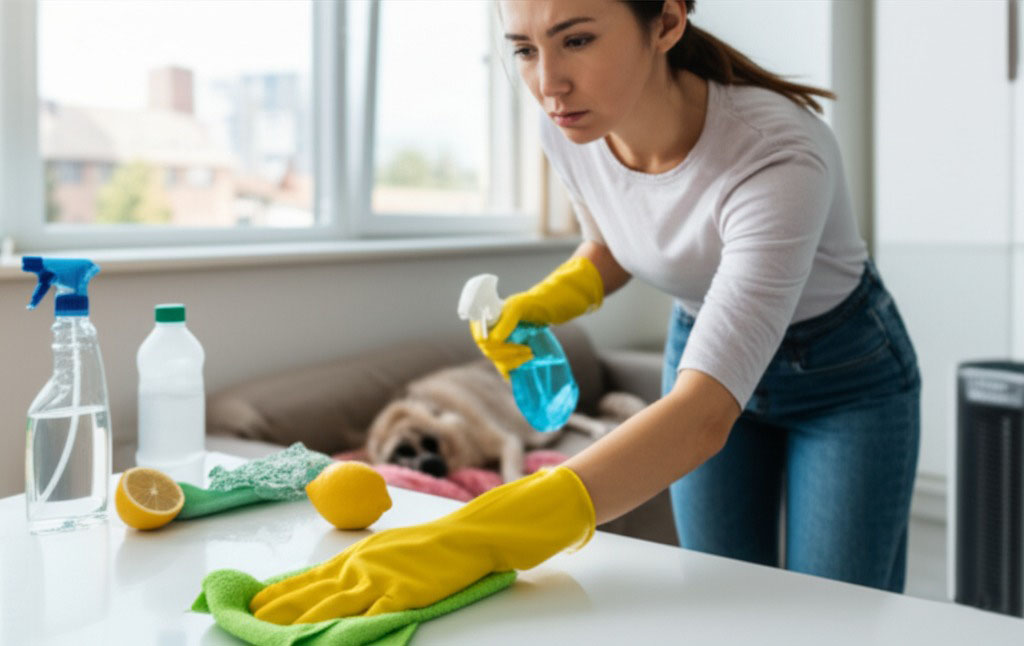
How to detox your home safely
Once your pup’s out of harm’s way, it’s time to clean house—literally. Toxic buildup from plug-ins or sprays can linger, so give your home a proper detox.
Here’s how to do it right:
Ventilation: Open windows daily to improve indoor air quality.
Air purifiers: Use HEPA filters to trap particles and reduce VOCs.
Switch to natural cleaners: Say goodbye to harsh chemicals—go for vinegar, lemon, or bicarb soda.
Dust regularly: Keeps allergens and chemical residue from building up.
Ditch synthetic scents: Replace with chemical-free alternatives like dried herbs or pet-safe essential oils.
Cleaning the air isn’t just about smell—it’s about keeping your best mate safe.
Conclusion
Turns out, those sweet-smelling sprays might be more trouble than they’re worth—especially for your dog. What freshens your lounge could be clogging up your mate’s lungs without you even knowing.
“Dogs have a much sharper sense of smell than humans,” says Aussie vet Dr. Alex Hynes, “so even mild scents can overwhelm them.”
Ditch the chemical fog. Go for pet-safe options, crack a window, or try a charcoal bag. Your dog will breathe easier—and you’ll both feel better for it.
Yes, they sure can. Dogs have sensitive respiratory systems, and the chemicals in many air fresheners—especially plug-ins and sprays—can lead to coughing, sneezing, eye irritation, or even more serious symptoms like lethargy and vomiting.
It’s best to go with products specifically labelled as “pet-safe” or “non-toxic.” Look for brands that use natural, unscented, or essential oil blends approved by vets—but avoid oils like tea tree, eucalyptus, and clove, which can still be harmful.
Plug-ins might seem harmless, but they often release a steady stream of volatile organic compounds (VOCs) into the air. These VOCs are tough on a dog’s lungs and can build up in poorly ventilated spaces.
Some can, yep. While they smell lovely to us, a few popular oils are actually toxic to dogs even in small amounts.
Tea tree oil
Eucalyptus oil
Cinnamon oil
Pennyroyal
Wintergreen
Watch for these signs:
If you see these, it’s best to stop using the product and call your vet.
Sudden sneezing or coughing
Rubbing their face on the floor or furniture
Red, watery eyes
Lethargy or hiding
Vomiting or diarrhoea in more serious cases
Most aren't. Gel-based fresheners often contain artificial fragrance and preservatives, which can cause problems if inhaled—or worse, licked. Curious pups may try to chew them, so they’re a no-go for dog-friendly homes.
Absolutely. Baking soda is a top natural deodoriser and completely safe for dogs. You can sprinkle it on carpets before vacuuming or leave an open jar in smelly areas to absorb odours.
Be sure to steer clear of:
These can irritate your dog’s lungs, skin, and eyes—even at low doses.
Phthalates
Benzene
Formaldehyde
Synthetic fragrance
Isopropyl alcohol
Not really. Incense and many scented candles still release smoke and synthetic compounds that aren’t ideal for dogs, especially in closed-up rooms. If you must use candles, look for unscented soy or beeswax options made without paraffin.
Here are some safer ways to keep things smelling nice:
Use HEPA air purifiers
Open windows for regular airflow
Simmer pet-safe herbs like rosemary or thyme on the stove
Vacuum regularly to reduce odours
Use vinegar-water sprays on surfaces
Yes, they can. Just like in humans, air fresheners can irritate a dog’s immune system. This might show up as itchy skin, sneezing fits, or watery eyes—especially in dogs prone to allergies or asthma.

Leave a comment